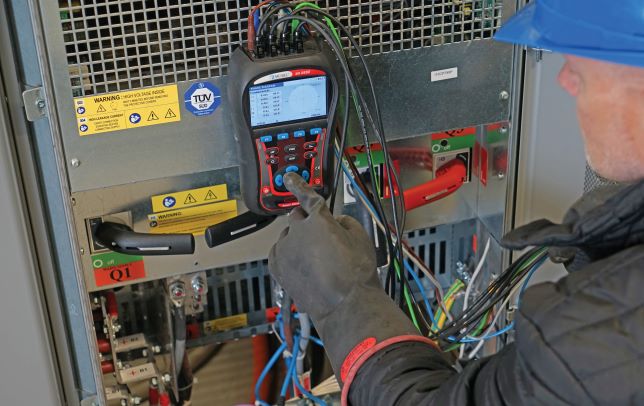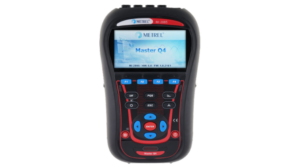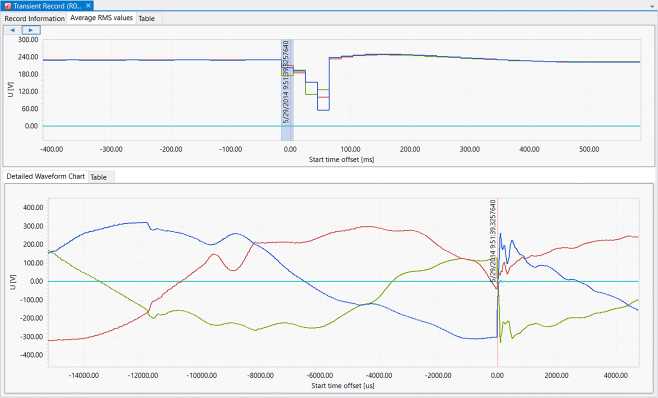TROUBLESHOOTING WITH A PQA
Three-phase power, for all its usefulness in industrial and other settings with higher loads, can be quite troublesome when things go quite literary the wrong way.

Transients, interruptions, sags and swells, waveform distortions, frequency variations and bad load compensation and harmonics are just some of the power quality phenomena that can cause issues, though not only in three-phase systems. Resultant voltage imbalance between phases is on the other hand a uniquely three-phase issue. One of the most common problems is however incorrect phase sequence, which can wreak havoc on (directly connected and unprotected) rotating equipment and anything they are connected to (by turning in the wrong direction).
Though, wrong phase sequence can have damaging and unpredictable effects on other electrical equipment as well. For example, connecting two or more three-phase transformers in parallel without bothering to check the phase sequence will invariably have a fairly flammable and violent outcome. Electrical power equipment aside, electronic devices are likewise sensitive to wrong phase sequence,  although many usually have some form of protective mechanism in place that prevents the worst.
although many usually have some form of protective mechanism in place that prevents the worst.
Uninterruptible power supply (UPS) systems are a good example and each year a number of them are damaged or irreparably destroyed (often together with connected loads) by improper use of a maintenance bypass switch (MBS) or through some other mistake. Fortunately, there are several methods of checking phase sequence order including the humble digital multimeter (if it has this functionality) or a dedicated phase rotation meter. Still, complex and fast switching manoeuvres in large systems with multiple power sources and variable loads may require a more versatile and sensitive troubleshooting tool – something like a power quality analyser (PQA).
A CASE STUDY
A plastic extrusion company (name and location withheld at their request) was experiencing total power loss during switching between the grid and a backup diesel generator – both connected through a UPS. The UPS is rather archaic but has rendered reliable service in the past, while the 1 MW diesel unit is brand new and had been thoroughly inspected after each failure. However, neither the company’s maintenance engineers nor the contractor that supplied and integrated the generator unit were able to identify what was wrong.
It wasn’t always that way. Grid power outages have been few and far between and the UPS, despite being able to supply power for only up to 5 minutes, was sufficient for weathering power outages that lasted a few minutes at best. Until new manufacturing companies started popping up in the vicinity and power demand rose accordingly – often at approximately the same time, stressing the grid beyond maximum capacity. The local utility that operates the grid is, for one reason or another, slow to accommodate these peak power intervals and their customers suffer accordingly. Therefore, whenever there was an outage (quite often longer than a few minutes), the plastic extrusion company’s UPS started the generator (when batteries started to run low) but in the next moment promptly tripped the breakers leaving the production floor without power.
The company’s management, after repeatedly dealing with financial fallout of these shenanigans, (finally) decided to hire a professional troubleshooter (a Metrel associate) “armed” with an array of Metrel testers, including a MI 2892 Power Master PQA. He connected the PQA to the UPS’s output and set it up for long term recording. Soon enough another (grid) power outage took place and the UPS / diesel generator again failed to provide emergency power. What was found was nothing short of astonishing – well, actually very trivial, but given the complexity and substantial monetary value of the entire system still quite unbelievable.

Whoever was responsible for connecting the backup diesel generator to the UPS (and inspecting after each power outage) failed to check that the phase sequence was the same as on the input from the grid. The UPS detected this, but lacked (older design) means to signal what exactly was wrong. The MI 2892 Power Master PQA captured (recorded) the exact moment the phases were switched and the data, when viewed on a PC as a graph, was indisputable (image at the end of this article). Rectifying the problem was simple: two leads were switched, i.e. phase sequence is now identical for both sources (from the perspective of the UPS), and now the company can continue manufacturing plastic intake manifolds trouble free.

